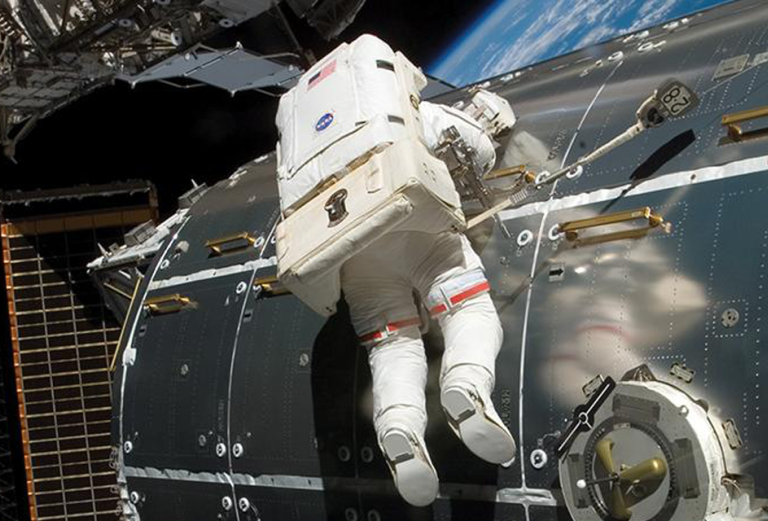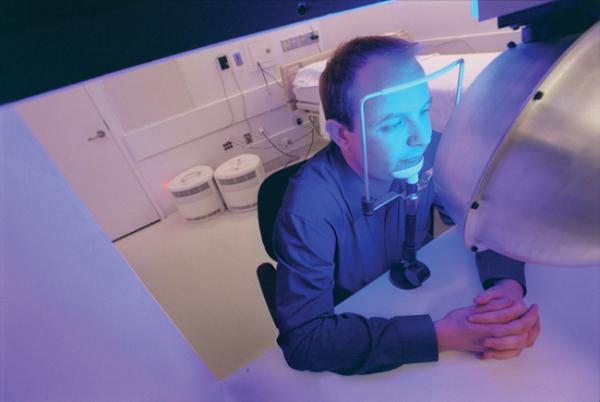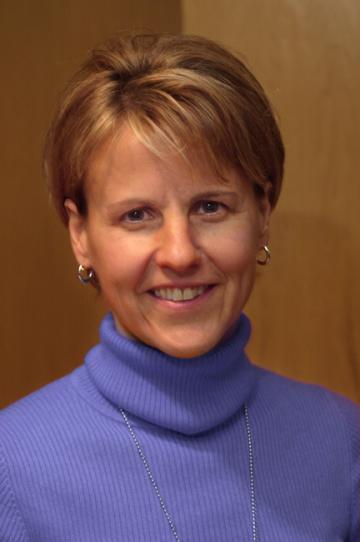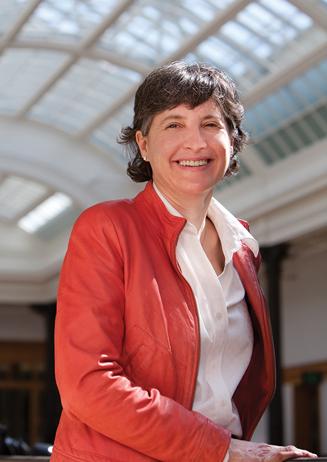Blues Cues
Researchers cast a little light on the subject of sleep
- Feature

“Dr. Czeisler, Houston has a problem.”
NASA’s mayday came to Charles Czeisler in August 1990, shortly after he had reported in the New England Journal of Medicine that he had shifted the circadian clocks of night workers with nothing but a healthy dose of light. In Houston, the space shuttle Discovery had been facing repeated delays. Week after week, the astronauts readied for a nighttime launch only to face another deferral. Meanwhile, astronauts were struggling to adjust to the inverted schedule required by the mission’s rigid launch window. Sleeping when required, rather than when biologically cued, seemed impossible. NASA administrators told Czeisler they were so desperate for solutions that they were considering a plan to set up a facility overseas, where the astronauts could adjust to a schedule more in sync with what they’d need while on their mission.
Czeisler did not like the sound of this plan. He left for Houston the next day.
Despite the urgency of the situation, NASA decided it needed to launch a decade-long research program before jumping into using light to control the astronauts’ sleep–wake cycle. After all, the agency reasoned, Czeisler, the Frank Baldino, Jr., Professor of Sleep Medicine at HMS and chief of the Division of Sleep Medicine at Brigham and Women’s Hospital, had reported shifting the clocks of only a dozen or so people.
The only thing that mattered to the astronauts, however, was that Czeisler’s light therapy worked. They wanted the lights, and they wanted them now. Based on their flight schedule, Czeisler had two weeks to replicate his laboratory’s light-controlled, one-room environment.
When the astronauts finally did launch, they left Czeisler a gift: preflight urine samples that showed they were releasing melatonin, a hormone normally released during periods of darkness, during their night, which was daytime on Earth. The astronauts had successfully inverted their physiological schedules. NASA has since used the lighting treatment for astronauts on any mission that launches at a time requiring a shift of more than three hours from local time.
NASA did carry out a ten-year research program on light therapy, the results of which have led a growing number of astronauts and mission controllers to work with flight surgeons to develop sleep–wake prescriptions tailored to individual schedules. The lessons learned by NASA have the potential to help night-shift workers of all sorts, from police officers and firefighters to hospital workers. The trick, however, has been in translating discoveries from a controlled laboratory environment into a messy world where nurses fit 40-hour weeks into three days but still need to get their kids on the bus every morning, and where almost everyone uses artificial lighting to make each day far too long.
The Eyes Have It
In Czeisler’s early studies of totally blind people, he observed a person without any rod or cone function, the only known light-sensitive cells in the eye, who still responded to light cues by repressing melatonin. It wasn’t until 2000 that studies, many funded by the National Space Biomedical Research Institute (NSBRI) and carried out by researchers such as Czeisler and Steven Lockley, an HMS associate professor of medicine in BWH’s Division of Sleep Medicine, indicated how this was possible.

Studies in animals revealed the presence of melanopsin, a blue-light–sensitive photopigment, in the ganglion cell layer of the eye, which had been thought to be light insensitive. Although few in number, these cells form a light-detecting network across the retina, a web that allows the ganglion cells to react to even indirect light.
The network sends signals to the suprachiasmatic nucleus, a bundle of approximately 50,000 cells, each acting as an individual pacemaker, which nestles in the brain’s hypothalamus. This bundle acts as the body’s master clock to control circadian rhythms in a number of physiological, metabolic, and behavioral processes.
“This was a new photoreceptor,” says Lockley. “People had studied the eye for a long time, and they all had missed it.”
Lockley’s studies confirmed that this light-sensitive circuit was more responsive to blue light and that blue light was twice as effective as green at shifting the circadian clock and alerting the brain.
These findings have helped make light therapy more targeted and tolerable. “We now know that just having light in the room can be therapeutically effective,” says Lockley. “It doesn’t need to be in your face.” A recent study from the Netherlands illustrates Lockley’s point. Researchers there showed that placing brighter lights in the common areas of care facilities for dementia patients slows the rate of patients’ cognitive decline, reduces depression, and delays the onset of functional limitations. With support from NASA and NSBRI, Lockley and others are testing the effectiveness of prototype light fixtures that use blue-enriched white light to alert the body when needed and blue-depleted light to increase sleepiness before slumber.
It turns out that lighting technology, too, has matured, offering functionality that can exploit our understanding of the physiological effects of color. A single LED light fixture, for example, can be made to shine blue, green, red, or thousands of different colors or types of white light, at the flip of a switch, allowing alertness and sleepiness to be initiated from one source. “The technology opens new avenues,” says Lockley. “We can now consider how to use light in hospitals and other environments that have multiple requirements.”
In for the Long Haul
In 1996, when people were walking around Houston wearing “Mars or Bust” buttons, NASA launched the first Mars mission with the rover Sojourner.
Each day, Sojourner woke with the sun, set into action by its own built-in circadian clock. On Earth, controllers had spent the night calculating where the rover had traveled based on the data it had transmitted before going to sleep. When Sojourner woke up, the controllers sent it directions for the day ahead.

This schedule would have been sustainable for the controllers if not for the fact that a Mars day is 39 minutes longer than an Earth day. “It was like traveling across two time zones every three days. Continuously. For months,” says Laura Barger, an HMS instructor in medicine and an associate physiologist in the Division of Sleep Medicine at BWH. Eventually, the Earth-bound crew felt so fatigued they clamored to stop.
When NASA launched the Mars lander, the Phoenix, in 2003, Barger and Lockley teamed up with the controllers to provide a blue-light intervention, the first NASA application of blue-light research. “We were successful at keeping the biological clocks on a Martian day,” says Lockley. The results, which show the controllers’ melatonin production shifting to match the day length on Mars, are being reviewed.
Vital Signs
Similar research is underway for astronauts on the International Space Station, a space-based research facility. Launched in 1998 and continuously occupied since late 2000, the station is expected to provide a platform for studying how living in space affects human health.
Barger monitored sleep activity among ISS astronauts using actigraphy, a technique that charts sleep–wake cycles by measuring a person’s movements with a watch-like device that contains an accelerometer. During sleep cycles, there is less movement.
Barger found that astronauts slept only about six hours per night, far short of the eight hours Czeisler recommends, for example, to professional basketball players to maintain performance. Continuous sleep deprivation has a cumulative effect, so after about a week of short nights, cognitive performance declines in a way similar to that seen with intoxication. Barger hopes that one day every astronaut will wear an actigraph as an operational medical requirement, making sleep measurements a new vital sign for space-based personnel.
That hope may become an easy reality. NASA is so convinced of the importance of restful sleep that, when it upgrades the lighting in the ISS in 2014, it plans to install programmable LED lights that will allow the astronauts to maintain a regular day–night cycle by shifting lights from blue and green to red as the day progresses.
Land of Nod
Throughout the day, alertness waxes and wanes, body temperature and heart rate fluctuate, the body responds differently to medications, and creativity ebbs and flows. “I realized that these cycles would likely affect most biological experiments,” says Elizabeth Klerman ’86, an HMS associate professor of medicine and associate physician in the Division of Sleep Medicine at BWH. Klerman builds mathematical models of circadian rhythms. “One person’s noise,” she says, “is another’s fascination.”

At NASA’s request, Klerman and her team continued developing models that predict objective performance and subjective alertness under different work-shift conditions, such as the abrupt schedule changes that occur when a shuttle docks at the space station at off hours. Over the years, NSBRI funded Klerman’s work to evolve the mathematical models into sophisticated software tools that predict how the circadian clock’s internal time and rhythm will change with a shift in schedule. Using data specific to an individual, the software can suggest a schedule of light interventions. It can even predict a person’s periods of peak performance and alertness. Such knowledge could help astronauts plan the best ways to prepare themselves to perform complex tasks.
For terrestrial applications, says Klerman, the software could be used by the military to select the most rested pilot for a long-distance mission. And Klerman is discussing with an airline an application that could help commercial pilots assess sleep and safety factors when making their bids for flights. Taking on an extra flight to Hawaii might lose its appeal if a pilot learns she will likely fall asleep midflight.
Power to the Sleepers
In 2001, Czeisler formed the Harvard Work Hours, Health and Safety Group, of which Barger and Lockley are members. The group works with a variety of safety-sensitive professions, such as police officers, firefighters, physicians, airline workers, NASA mission controllers, and most recently, federal air marshals. A major effort of the group centers around designing safer schedules for shift workers.
Klerman, for example, is working with Christopher Landrigan, an HMS associate professor of medicine and an associate physician in the Division of Sleep Medicine at BWH, to apply her software to the design of safer, but still effective, schedules for Children’s Hospital Boston, where Landrigan also works in pediatrics.
Two decades have passed since NASA called Czeisler. Today, the use of light and smart scheduling to optimize alertness has become an integral part of NASA missions and operations. Perhaps soon these insights will be tools that help sleep-deprived people on Earth.
Elizabeth Dougherty is an author and a freelance science writer based in Massachusetts.
Images: NASA (top); Kris Snibbe/Harvard News Service (Lockley); John Chase/Harvard News Service (Barger); John Soares (Klerman)